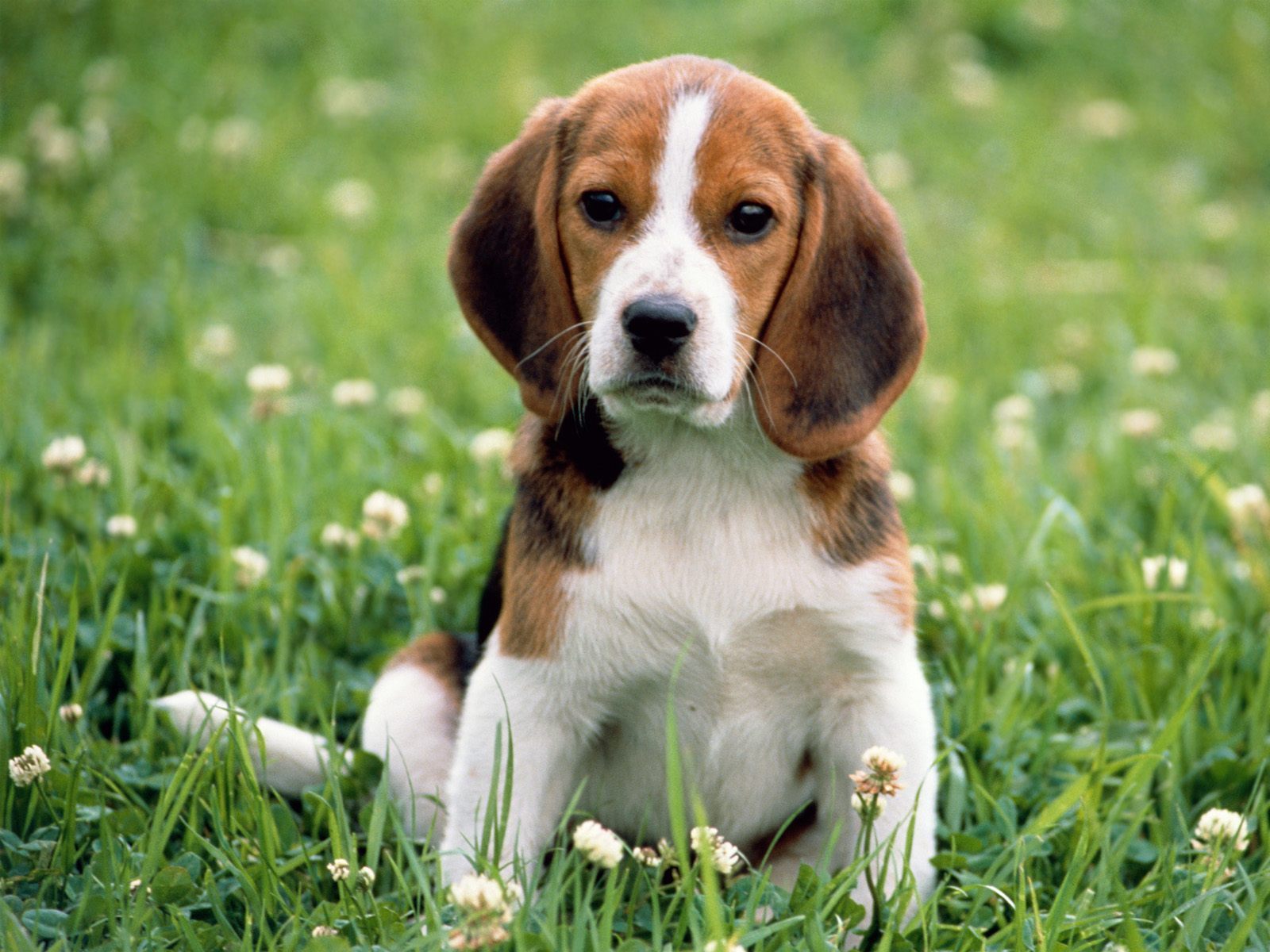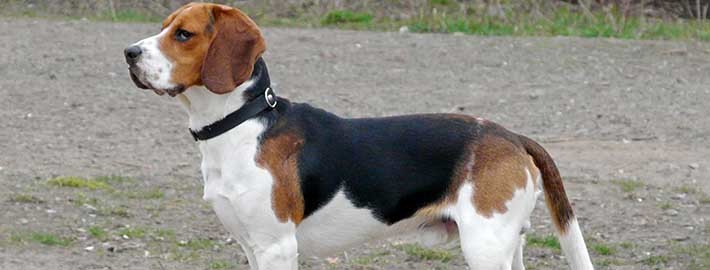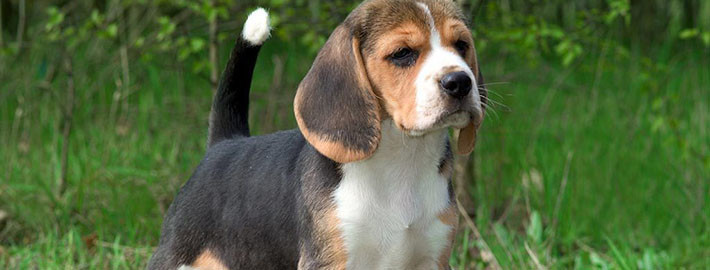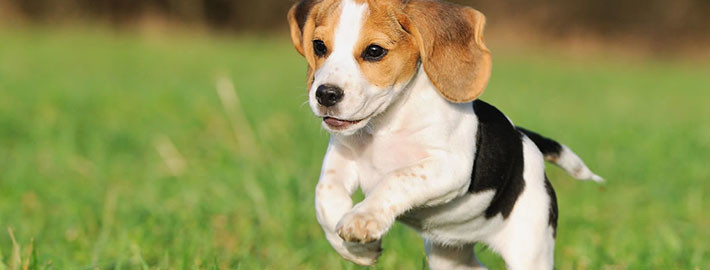What makes the Beagle Unique?
The loveable and inquisitive Beagle has been popular since its earliest days. Members of this breed make wonderful companions for active families with small children. However, Beagles can also be found serving as game, detection, and therapy dogs in a number of locations throughout the world.
Breed Groups
Page Contents

SnapShot
| Size: | Males – 36 to 41 cm (14 to 16 inches) Females – 33 to 38 cm (13 to 15 inches) |
| Weight: | Males – 10 to 11 kg (22 to 24.3 pounds) Females – 9 to 10 kg (19.8 to 22 pounds) |
| Origin: | Great Britain |
| Life Span: | 12 – 15 Years |
| Colour: | Brown & White, Orange & White, White & Tan, Tri-color, Red & White, Chocolate Tri, Lemon & White |
| Litter Size: | 2 to 14 puppies, 7 being the most common |
Is the Beagle Right For You?
the beagle was bred as a pack hunter and needs companionship, whether human or canine. It loves to explore the outdoors and is an enthusiastic trailer. Given adequate exercise, it is a calm, tractable house pet. Beagle is loving, sweet and gentle. Happy to see everyone, greeting them with a wagging tail. Sociable, brave and intelligent. Excellent with children and generally good with other dogs, but because of their hunting instincts, they should not be trusted with non-canine pets, unless they are socialized with cats and other household animals when they are young. Beagles have minds of their own. They are determined and watchful and require patient, firm training. It is important you are this dog’s pack leader and that you provide the proper amount of mental and physical exercise including daily pack walks, to avoid separation anxiety. With enough exercise they will be calm. You can also purchase animal scents and play tracking games with your beagle to help satisfy their instinct to track.
In 5 Words
- Even Tempered
- Gentle
- Excitable
- Amiable
- Determined
Characteristics
Learn About the Beagle
Description
General Description
The solidly-built Beagle should resemble a miniature foxhound. These dogs have a medium stature, which allowed them to be either easily followed or carted about during hunts. Beagles should have square bodies, with slightly domed and lengthy skulls. They have medium-size muzzles that are also square in shape. Hazel or brown eyes are present on this breed and the dogs should have black noses. Beagles have long, wide ears that are low set and hanging. Their tail should be set high, but not curled over their backs. Their round, firm feet and their sturdy build helps enable Beagles to quickly move across difficult terrain. The breed is also noted for both their distinctive baying and their amicable natures.
Size
There are two different sizes recognized by the AKC, but most of the other international dog clubs only acknowledge one type of Beagle. Generally speaking, Beagles should be between 13 and 16 inches (33 and 46 centimeters) in height. Canadian and American breed standards call for these dogs to be less than 15 inches. Females Beagles are somewhat smaller than their male counterparts. They should weigh about 20 to 23 pounds (9 to 10 kilograms) on average and male Beagles should weigh about 22 to 25 pounds (10 to 11 kilograms).
Coat
These dogs were originally bred to have coats that would withstand running through the underbrush on hunts. As a result, Beagles have sleek, hard fur that is of a medium length. Many different coloring variations are found in this breed. Lemon, tri-color, black and tan, red and white, orange and white, or lemon and white, blue tick and red tick are all accepted in the show ring.
Short History of the Beagle
Hunting hounds have thrived in England since the Roman occupation and various English monarchs had pets known as glove or pocket beagles. However, modern Beagles appeared around the 1830s as a mixture of several hounds. This breed of scent hound was especially good for chasing rabbits and foxes. In the 1860s, standards were drawn up for Beagles. By 1888, the National Beagle Club had been created so that agility and obedience contests could take place. Although some Beagles still serve their original purpose as hunting dogs, members of the breed are more typically found as family pets.
Temperament
Bred to hunt alongside people and other dogs, Beagles are well-known for their friendly dispositions. They require company of either the canine or human variety and, when given enough exercise, make excellent house pets. This gentle breed is wonderful with children as Beagles are tolerant, hardy, and playful. They also are usually friendly towards other dogs. However, care should be taken with cats and other pets as Beagles may regard them as prey due to their ingrained hunting instincts.
Beagles tend to have minds of their own and are very curious. Due to their history as scent hounds, it is not surprising that when let off the leash this breed will follow any interesting smell that they detect. Therefore, they should only be let off their leash in areas that are safely enclosed. Beagles are also noted for their distinctive short howls and will make a lot of noise if not given enough exercise.
Caring for Your Beagle
General Health
A number of health issues have been noted in Beagles. The breed is prone to epilepsy, hypothyroidism, dwarfism, and a range of disk diseases. Sedentary or older dogs may also have problems with weight gain. Immune mediated polygenic arthritis has been occasionally noted as well in these dogs.
Due to their floppy ears, Beagles are more likely to suffer from ear infections than other breeds. Working dogs may pick up parasites over the course of their duties as well as suffer minor injuries. Sprains and cuts are not uncommon. Inactive dogs have a tendency to become overweight as these dogs have an especial love of food.
Beagle puppies can sometimes have developmental delays, which may later end up turning into a case of Funny Puppy syndrome. Though the dogs are typically healthy, they have crooked backs and weakened legs. They are also more susceptible to sickness than others.
Eye problems are also a concern for Beagles and their owners. Glaucoma, retinal atrophy, and corneal dystrophy are common problems in this breed. Distichiasis and “cherry eye” are not unheard of but both these conditions are able to be corrected by surgery.
A condition called reverse sneezing is known to occur in Beagles. Although the dog will sound like it is gasping for breath, it is instead drawing air in through its mouth and nose. This condition is not harmful but owners will nonetheless need to be aware of it.
Care
Daily
This breed requires a long daily walk.
Weekly
Brushing Beagles once or twice a week with a hound mitt is a good idea. Wiping out their ears regularly with a vet approved cleaning solution and a cotton ball is also suggested.
Monthly
As with any other dog, the Beagle needs monthly flea, tick and heartworm prevention medication. Their nails should also be trimmed as needed.
Grooming & Bathing
Due to Beagles’ excellent sense of smell, dips are not recommended. They will only need to be bathed once every three to four months unless they encounter something smelly, such as a skunk.
Exercise & Training
Beagles are independent minded and may not always listen to commands that do not suit them. They need consistent, patient training and regular exercise. However, this breed is very fond of food and treat based training might be the only way to get them to follow orders. It is also a good idea to keep anything edible out of a Beagle’s reach unless it can be safely ingested. The best way to train this breed is to turn the learning experience into a game otherwise the dog may get bored and lose interest. When getting a Beagle puppy, one from a show breeder rather than a hunting line is best if one is seeking a dog with a laid back personality.












